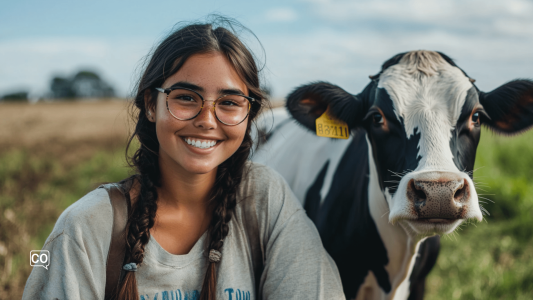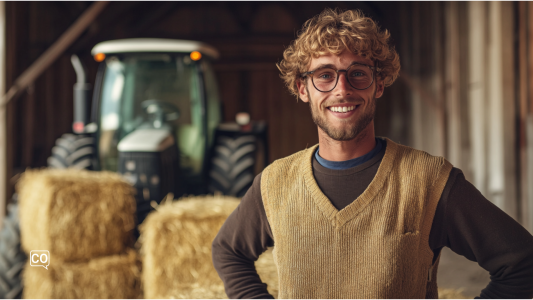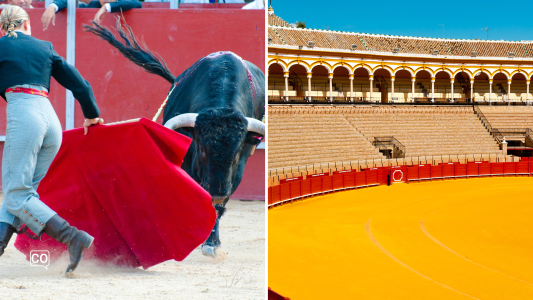Animales de granja

Learning goals:
- Situation: Aprende los nombres de los animales de la granja (Learn the names of the farm animals)
- Verb: Alimentar (to feed) - Presente, indicativo (Present, indicative)
-
Grammar: La diferencia entre
"por qué" y"porque" (The difference between "por qué" and "porque") - Culture: El toro de lidia: una tradición en la cultura española (The fighting bull: a tradition in Spanish culture)
Learning module 2 (A2): Naturaleza y medio ambiente (Nature and environment)
Teaching guidelines +/- 60 minutes
Listening materials
Video, audio, exercises and worksheets available.
A2.8.1 Diálogo: Un día en la granja con Pedro y Ana
A2.8.1 A day on the farm with Pedro and Ana
Pedro y Ana están en la granja alimentando a los animales. Practica vocabulario sobre animales de la granja con este diálogo fácil en español.
(Pedro and Ana are at the farm feeding the animals. Practice farm animal vocabulary with this easy dialogue in Spanish.)
Teaching guidelines +/- 15 minutes
A2.8.2 Gramática: La diferencia entre "por qué" y "porque"
A2.8.2 Spanish grammar: The difference between "por qué" and "porque"
(Learn the difference between "por qué" and "porque" in Spanish.)
Teaching guidelines +/- 15 minutes
A2.8.3 Cuento corto: Los animales felices de la granja de Luis
A2.8.3 Spanish short story: The Happy Animals on Luis's Farm
Luis cuida a los animales de su granja. Aprende sobre la vaca, el cerdo, el gallo y mucho más a través de esta cuento.
(Luis looks after the animals on his farm. Learn about the cow, the pig, the rooster and much more through this story.)
Teaching guidelines +/- 15 minutes
A2.8.4 Cultura: El toro de lidia: una tradición en la cultura española
A2.8.4 Spanish culture: The fighting bull: a tradition in Spanish culture
El toro de lidia es parte de una tradición española donde toros participan en las corridas.
(The fighting bull is part of a Spanish tradition where bulls participate in bullfights.)
Teaching guidelines +/- 10 minutes

